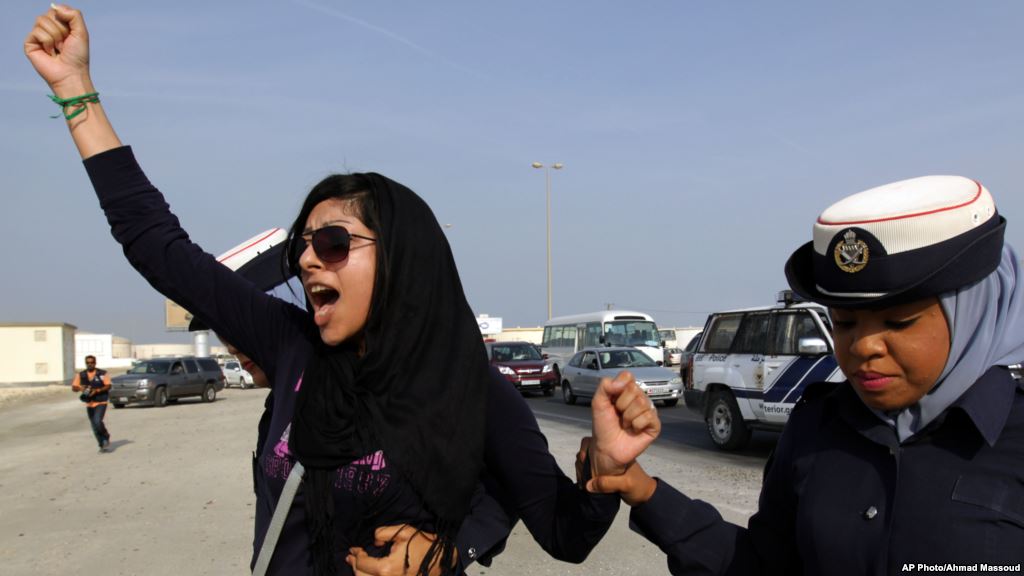
Washington, DC – Hate crimes in the United States reached a record high last year, the Southern Poverty Law Center (SPLC) said on Wednesday, adding that much of the rise is due to the rhetoric of US President Donald Trump.
Driven by Trump’s anti immigration rhetoric and policy, the number of hate groups active in the US peaked to 1,020 in 2018, a seven percent increase from 954 recorded in 2017, according to the SPLC, which began tracking hate groups in 1971.
Trump statements echoed by hate groups included describing immigrants as “invaders”, calling for a Muslim ban, attacking African nations and speaking against the country’s alleged demographic changes.
In 2018, at least 40 people were killed by those motivated by or attracted to far-right ideologies, the watchdog group wrote in its annual report, released on Wednesday.
The last peak in the number of hate groups in the country was recorded in 2011 during the height of a backlash against President Barack Obama, the first black president, the SPLC said. According to the watchdog, there were 1,018 documented hate groups then.
Heidi Beirich, director of the SPLC’s Intelligence Project, said she first heard of building a wall to separate the US from Mexico on a white supremacist site.
The same demand became one of Trump’s most famous campaign promises in 2016.
Since then, the SPLC recorded an increase in the number of groups active, which followed three years of decline in groups during the Obama administration.
Federal figures were consistent. Latest statistics from the FBI show that hate crimes increased by 30 percent in the three-year period ending in 2017.
The increase followed three years in which hate crime incidents fell by about 12 percent.
“President Trump has opened the White House doors to extremism,” the SPLC report states. “Not only consulting with hate groups on policies that erode our country’s civil rights protections, but also enabling the infiltration of extremist ideas into the administration’s rhetoric and agenda.”
A handful of Trump appointees include officials with ties to groups hostile towards Muslims, immigrants, refugees, and the LGBT community, the report said.
Majority of hate groups – including neo-Nazis, Ku Klux Klan (KKK), racist skinheads, neo-Confederates and white nationalists – adhere to some form of white supremacist ideology.
The number of white nationalist groups, those particularly electrified by Trump’s presidency, surged by almost 50 percent from 100 groups to 148 in 2018.
The SPLC said black nationalist groups also rose 13 percent last year to 264.
The number of anti-Muslim hate chapters, however, dropped from 114 in 2017 to 100 in 2018, according to the SPLC, but rights group have said hate crimes against Muslims were up last year.
‘ISIS tactics’
Beirich said US hate groups were using the internet to spread their messages and propaganda in the absence of strong online regulations.
She said the web was now the main recruitment tool for hate groups and “absolutely” key for white supremacists.
SPLC have long called on tech companies to take action against the hate on their platforms.
“Similar to ISIS using this to push propaganda and ideas, it has now become the main place for recruiting to happen,” Beirich said, referring to the Islamic State of Iraq and the Levant (ISIL, also known as ISIS).
The 2017 Unite the Right rally in Charlottesville, Virginia, the largest demonstration of white supremacists in recent years, was first organised on Facebook.
“There is no question that technology has helped this movement,” she said. “Up until 2017 there was so much hate online.” Following Charlottesville, Facebook began cracking doing on hate content.
“There is a lot of mainstreaming of hate rhetoric,” she added. “The idea of building a wall came from the council of conservatives in [1989]. These ideas are leaping from the extremes to the mainstream. It would be nice to put them back where they came from.”
‘Terrible shaming of women’
In 2018, the SPLC added a new category to their hate groups to document a growing online movement that targeted women.
In contrast to a time when neo-nazis placed women on a “pedestal”, Beirich said now the internet was loaded with “terrible women shaming” and rape.
Although the anti-women movement bred and exists virtually, she said it has been connect to violence over the past year.
Violence and “domestic terrorism” surged around the 2018 midterm election when Democrats won the majority in the House of Representatives, the SPLC said.
Ahead of the election, a slew of pipe bomb packages were sent prominent Democrats before the election. And in late October, gunman entered a the Tree of Life synagogue in Pittsburgh, Pennsylvania and killed 11 people, shouting “all Jews must die”. The alleged shooter frequently posted anti-Semitic slurs and conspiracy theories online prior to the attack.
 |
| A memorial outside the Tree of Life Synagogue [Gene J Puskar/Reuters] |
Even more angering to hate groups, the SPLC report found, was the number of women elected to the US Congress, including two Muslims, and the election of an openly bisexual senator in Arizona.
“For white supremacists, these newly elected officials symbolise the country’s changing demographics – the future that white supremacists loathe and fear,” the report said.
Now fueled and legitimised by the sitting president, SPLC has noticed a new trend of hate groups looking beyond Trump as they grow politically frustrated their demands are not being met.
In the past, this has led to acts of violence and will be a worry leading up to the 2020 election, the SPLC said.












